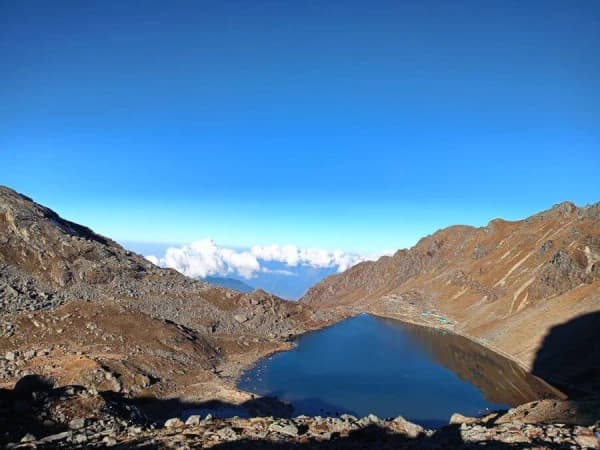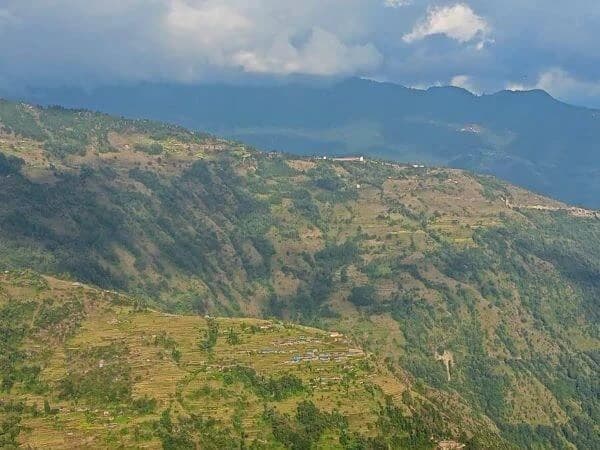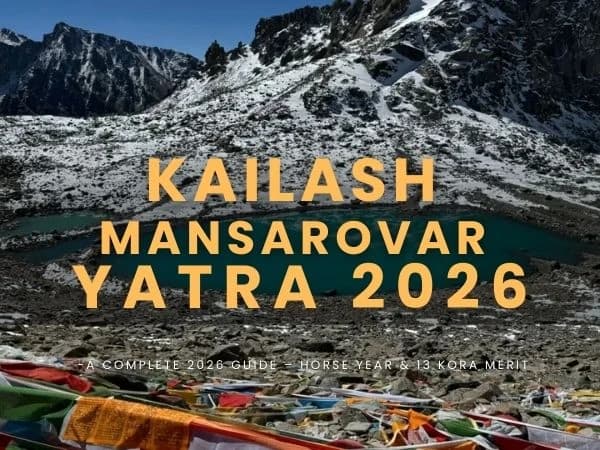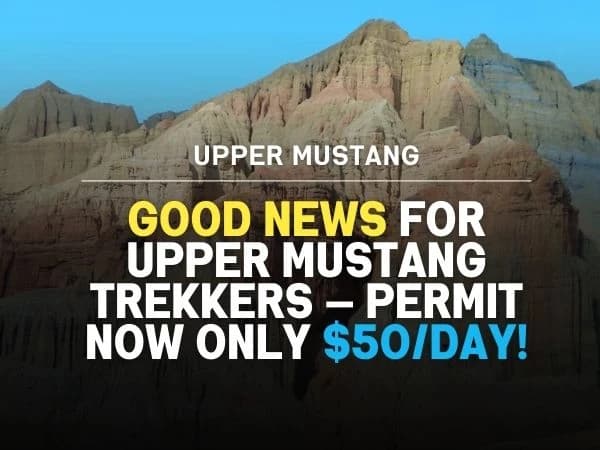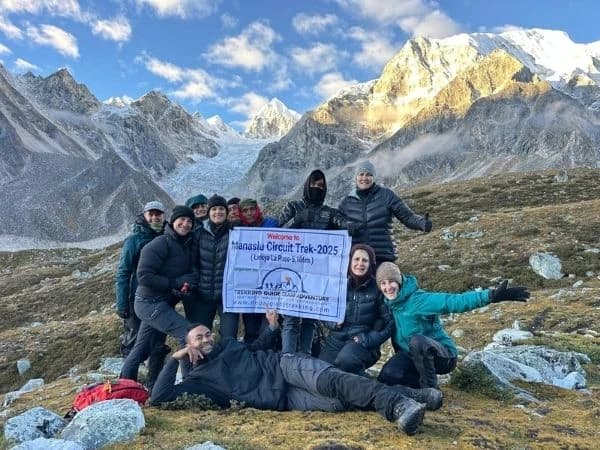Ama Yangri Trek Overivew and Facts
These are the facts you should know while planning for your Amayangri trek:
|
Trek Duration
|
2-3 Days depending upon the mode of tranportation
|
|
Maximum Altitude
|
3,771 m at Amayangri Peak
|
|
Region
|
Helambu, Sindhupalchok
|
|
Difficulty
|
Easy to Moderate
|
|
Accommodation
|
Local teahouses
|
|
Best Seasons
|
September - November, March to May, December to February
|
|
Permits
|
Langtang National Park Permit
|
Depending on your preferred means of travel, the Ama Yangri Trek will take you approximately 2 to 3 days. The trek is in the Sindhupalchok District, and your highest point will be Ama Yangri peak at 3771m. Slightly easier than other routes, this trek is perfect for beginners and people on tight schedules.
Yolmo tradition hospitality will be yours to enjoy in the local teahouses and homestays. Trekking is best done from September to November, and March to May. However, for the months of December and February, the weather remains clear, which makes it also suitable. For foreigners, a Langtang National Park Permit is mandatory to pass through the region.
Where is Ama Yangri Trek?
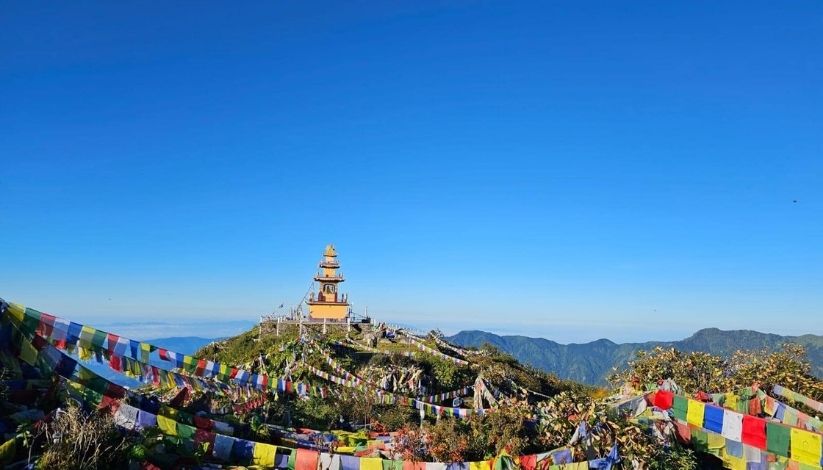
Ama Yangri Trek is situated at Sindhupalchok District, northeast of Kathmandu within the Helambu region in Nepal. You can start your journey from Kathmandu by local bus or private vehicle to Tarkeghyang. The distance from Kathmandu to Tarkeghyang is around 75km, the drive will take around 6 hours including your lunch break at Kyul
If you take bus, your hike will start from Tarkeghyang whereas if you take private jeep or two wheeler, your trek will start from Amayangri base camp. The trail passes through lush forests, traditional Sherpa villages, providing trekkers with both natural beauty and cultural immersion.
3-Day Ama Yangri Trek Itinerary
Day 1: Drive to Tarkeghyang and Trek to Amayangri Base Camp
On the first day of the trip, you should drive from Kathmandu to Tarkeghyang. The drive will take around 6 hours, and you will arrive at Tarkeghyang. There you can take a short break and trek to Ama yangri base camp. It will take around 2-3 hours depending on your pace. From the base camp you can see the first glimpse of Amayangri peak. You will stay overnight at local tea house surrounded by serene forests.
For your stay, you should book your room in advance, as it gets busy during the peak season, and there are only two resorts in the base camp.
Day 2: Early Morning Sunrise Hike and back to Tarkeghyang
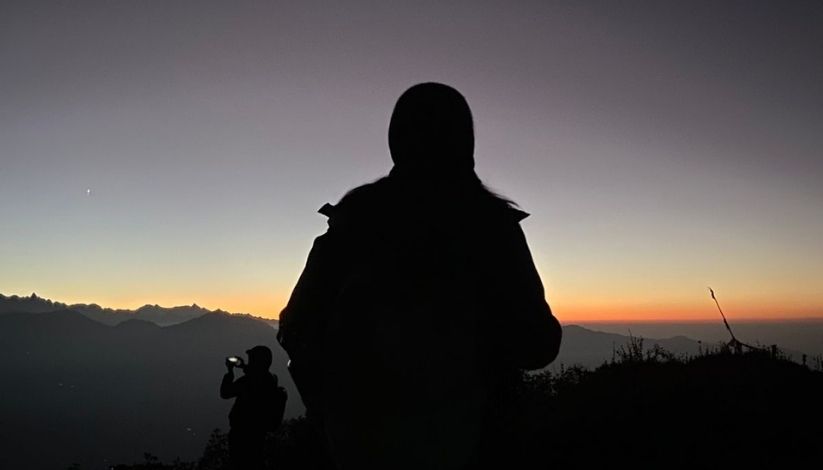
On second day, for the sunrise at the Ama yangri peak, it is recommended to you start your trek early around 3:00 AM in the morning. The trail is a moderately steep climb through rhododendron and pine forests. During your hike, the night sky will be filled with countless stars, and you can also enjoy stargazing during your breaks along the way.
You will be able to reach the summit around sunrise and enjoy panoramic Himalayan views. After spending some time at the peak, you will descend back to base camp for breakfast and hike down to Tarkeghyang for lunch, dinner and an overnight stay.
Day 3: Drive back to Kathmandu
After breakfast, drive back to Kathmandu, reflecting on your short but memorable Himalayan adventure.
How to Reach Ama Yangri Trek?
You can use many modes of transportation to reach Amayangri like local bus, private jeep or even two wheeler.
Ama Yangri By Local Bus (2 Nights/3 Days Trip)

- Route: Narayantar, Shiva Chowk (Kathmandu) → Sankhu → Melamchi → Tarkeghyang
- Duration: 6-7 hours
- Cost: As of 2025, the bus ticket to Tarkeghyang from Kathmandu costs Rs.650/person
- Tips: Only one local bus leaves every day at 6:00 AM in the morning and gets crowded. So, you should book the tickets one day before your journey. You can get the bus tickets from Ama Holymo Bus Stop at Shiva chowk, Narayantar.
Note: If you travel by bus, you should trek to Ama yangri base camp from Tarkeghyang, and the next day, bus departs before you arrive making your trip 3 days. However, you can contact the lodge to check the availability of the jeep, if yes, you can travel directly from base camp to Kathmandu.
Amayangri By Private Jeep/ Two-Wheeler (1 Night/2 Days)
- Route: Kathmandu → Ama Yangri Base Camp via the same main road
- Trip Duration: around 7 hours
- Tips: Though you can reach Ama yangri base camp directly from Kathmandu, for two wheelers, the ride requires experience as you will ride fully off-road after melamchi.
Note: If you travel by private jeep or two-wheeler you can directly reach the base camp in the first day and you can make it back to Kathmandu the next day.
Best Time for Ama Yangri Trek
Though, the trek can be done during all seasons, the perfect times are (September to November) and (March to May) . During this time, the weather is clear, skies are blue, and the mountain views are at their best.
You can also trek in winter (December to February) if you don’t mind colder mornings. You will also be able to experience snowfall during the time. During this time, the visibility is excellent, and trails are peaceful with few trekkers.
However, it’s best to avoid June and July, the monsoon months, as heavy rainfall can make the roads muddy and the trail slippery, with limited mountain visibility.
Accommodation and Food
For the accomodation you will find simple teahouses or lodges in Tarkeghyang and Amayangri base camp.Rooms are simple, with blankets, basic bathrooms.
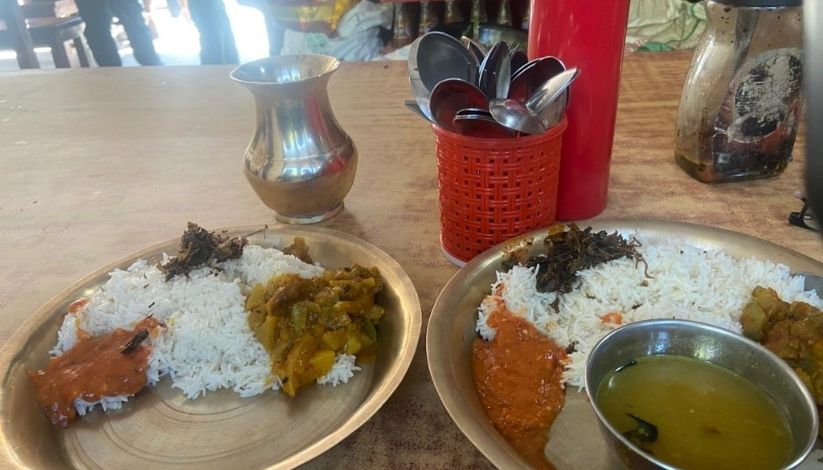
Meals include:
- Dal Bhat (rice and lentils) as shown in the picture above
- Noodles and soups
- Momos or Tibetan bread
- Tea, coffee, and local beverages
Cost and Permits
- Permits: Foreign nationals planning the Amayangri Trek are recommended to obtain Langtang National Park permit
Amayangri Trek Package Cost
|
Group Size
|
Cost Per Person
|
Booking
|
|
1 Pax
|
USD 275 (Single supplementary included)
|
Book Now
|
|
2–6 Pax
|
USD 200
|
Book Now
|
You can book now or directly inquire us via whatsapp
Includes:
- Experienced licensed trekking guide
- Accommodation during the trek (teahouse/lodge)
- All meals (breakfast, lunch, and dinner)
- TIMS Card and National Park entry permit
- Ground transportation (Kathmandu–Tarkeghyang and i–Kathmandu)
- Necessary government taxes
Excludes:
- Personal trekking gear and equipment
- Travel insurance
- Extra snacks, beverages, and alcohol
- Tips for guide and porter
- Anything not mentioned in the “Includes” section
For Nepali Citizens
Nepali trekkers do not require any trekking permits for the Helambu route.
Cultural and Religious Significance
 Ama Yangri Peak is important for the Helambu region. It is believed that Goddess Ama Yangri protects the Peak and the guardian deity oversees the villages and travelers. The monastery/chaitya at the peak is considered to belong to Jhyada Rinpoche in buddhist culture. The Peak is considered holy and the villagers feel that reaching the Peak is a sign of fortune and blessings.
Ama Yangri Peak is important for the Helambu region. It is believed that Goddess Ama Yangri protects the Peak and the guardian deity oversees the villages and travelers. The monastery/chaitya at the peak is considered to belong to Jhyada Rinpoche in buddhist culture. The Peak is considered holy and the villagers feel that reaching the Peak is a sign of fortune and blessings.
Being on the trail, Buddhist monasteries, prayer flags, and chortens are unique and rich things that represent peace and compassion. They also serve as a structure to emphasize the passage of Tibetan Buddhism. Monasteries chanting and the prayer wheels are proof of one’s walking into the spirituality.
Settlements on the trail; Tarkeghyang and Sermathang, are rich retainers where the Hyolmo (Yolmo) Sherpa are known for hospitality. Dry stone architecture, with a lot of extra lodgings, speaks of past lifestyles where pagan and devotion work life were in close structure.
Ama Yangri Peak Sunrise Experience
The early morning hike to Ama Yangri Peak is the major highlight of the trek. Starting around 3:00 AM, trekkers reach the summit before sunrise. The golden light illuminates the Himalayan range, creating stunning photo opportunities and a serene, spiritual atmosphere.
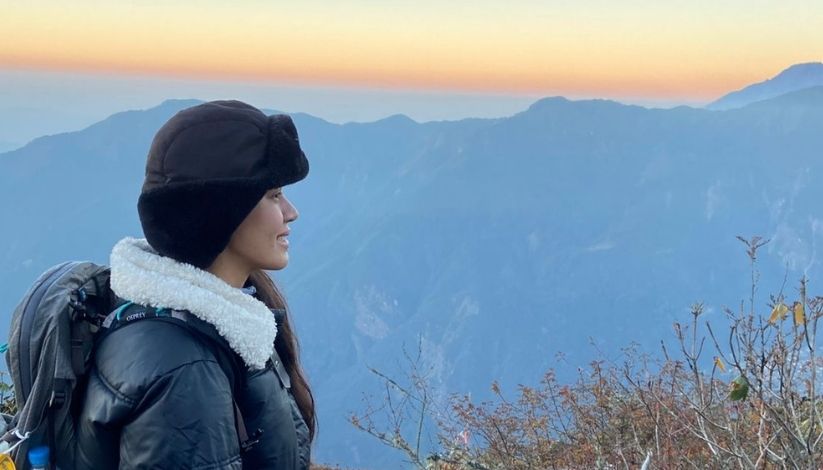
My Experience on the Ama Yangri Trek (October 2025)
I recently completed the Ama Yangri Trek from October 24th to 26th, 2025, with Trekking Guide Team Adventure, and it was an unforgettable adventure. The weather was perfect - the skies were clear, there was no snow, it was autumn, and there was crisp air - perfect for shooting photos and hiking.
On the first day, we drove to Tarkeghyang from Narayantar Shiva chowk and enjoyed the view of terraced fields, rivers, and forests. From there we started the hike to Amayangri Base Camp. That evening, we stayed in a teahouse, which was cozy, and we had a warm, traditional meal again.
The second day was the highlight of the trek. We started hiking at 3:00 A.M. to make it to Ama Yangri Peak to catch the sunrise. The hike was a moderately steep climb, but the view was well worth it. We could see an amazing panoramic view of Langtang, Dorje Lakpa, the Ganesh Himal, and even the peaks of Everest. The summit was spectacular, and we were able to enjoy the moment with the prayer flags. Later, we hiked down to base camp and had breakfast. We then continued back down to Tarkeghyang for lunch and our overnight stay.
The final day was simply a restful morning drive back to Kathmandu. Even in the short 3 days, the trek offered stunning views, cultural insight, and a peaceful Himalayan adventure, which made reflection easy. The Cultural Trekking Guide Team Adventure ensured my trek was smooth, safe, and enjoyable.
Conclusion
The Ama Yangri Trek is a short, accessible, and culturally rich Himalayan adventure. With breathtaking summit views, serene forests, and Sherpa and Hyolmo culture, this 3-day trek is ideal for anyone seeking a quick but fulfilling Himalayan experience.
People Also Ask about Ama Yangri Trek:
1. What is the height/altitude of Ama Yangri Peak?
Ama Yangri Peak stands at an elevation of 3,771 meters (12,372 ft) above sea level, making it one of the highest viewpoints near Kathmandu.
2. How far is Ama Yangri from Kathmandu?
Ama Yangri Peak is approximately 75 kilometers northeast of Kathmandu, located in the Helambu region of Sindhupalchok District. The drive takes around 6 to 7 hours depending on the route and road conditions.
3. How to reach Ama Yangri from Kathmandu?
You can reach Ama Yangri by traveling from Kathmandu to Tarkeghyang. You can take local bus, private jeep or even two-wheeler. You can take the private vehicles to base camp.
4. What is the Kathmandu to Tarkeghyang bus ticket price?
A local bus ticket from Kathmandu toTarkeghyang costs 650 as of 2025. Hiring a private jeep for the full route can cost NPR 10,000–12,000 depending on group size and season.
5. How long is the Ama Yangri trek?
The trek usually takes 2 to 3 days from Kathmandu. Most trekkers spend one night in Tarkeghyang or Ama Yangri Base Camp before hiking to the peak early in the morning for sunrise.
6. Do I need a permit for Ama Yangri Trek?
Yes, for foreign trekkers permit is required as Ama Yangri area falls within the Langtang National Park, so you’ll need a Langtang National Park Entry Permit.
7. When is the best time to visit Ama Yangri Peak?
The best seasons are March to May and September to November when the skies are clear and the trails are in good condition.
8. Is there accommodation at Ama Yangri Base Camp?
Yes, there are basic teahouses and lodges in Tarkeghyang as well as Ama Yangri Base Camp providing local meals and simple rooms. It is recommended to book in advance during the high season.
9. What is the temperature like at Ama Yangri?
The temperature varies with season:
-
Spring (Mar–May): 10°C to 20°C daytime
-
Autumn (Sep–Nov): 8°C to 18°C daytime
-
Winter (Dec–Feb): Can drop below 0°C at night
10. Does it snow at Ama Yangri?
Yes, snowfall occurs between December and February, turning the trail and summit area into a winter wonderland. It’s safe to trek if the weather is clear and you’re prepared with warm gear.
11. What is Chyomuthang Resort Ama Yangri?
Chyomuthang Resort is a local lodge at Ama Yangri Base Camp, known for its scenic location and comfortable rooms. It’s a popular overnight stop for trekkers heading to the peak
About the Author: Kabiraj Nepal

Kabi Raj Nepal, the founder of Trekking Guide Team Adventure, started his journey from the foothills of Ganesh Himal, Dhading. A government-certified trekking guide since 2003, he has devoted his career to promoting sustainable tourism in Nepal. With professional training from TAAN, NATHM, and KEEP, and fluency in Spanish, English, and Hindi, he continues to share his lifelong passion for the Himalayas with travelers from around the world.






 Ama Yangri Peak is important for the Helambu region. It is believed that Goddess Ama Yangri protects the Peak and the guardian deity oversees the villages and travelers. The monastery/chaitya at the peak is considered to belong to Jhyada Rinpoche in buddhist culture. The Peak is considered holy and the villagers feel that reaching the Peak is a sign of fortune and blessings.
Ama Yangri Peak is important for the Helambu region. It is believed that Goddess Ama Yangri protects the Peak and the guardian deity oversees the villages and travelers. The monastery/chaitya at the peak is considered to belong to Jhyada Rinpoche in buddhist culture. The Peak is considered holy and the villagers feel that reaching the Peak is a sign of fortune and blessings. 

